Paige P: I enjoyed how Paige highlighted two specific designers/periods. I would have maybe liked to see more examples of Duncan Phyfe's work though, because he was such an important designer/furniture maker during this time. I did really like her current day example of the kitchen though, that is the style I would like to have in my future kitchen.
Mackenzie C: I really thought it was neat that she included an example of the color pallet that was used during this period. I also like that she had an example of a floor plan, I actually did that on my blog as well. I think that seeing the floor plan makes it easier to imagine what stepping into a Victorian American home, really would have felt like.
Sunday, April 26, 2015
Saturday, April 25, 2015
The American Period
History
This is the time when the United States was still a young country, who had a lot to prove to their peers, especially England. The United States wanted democracy and independence from the mother country. So in 1776 the Declaration of Independence was signed, and so began a new way of life for Americans.
Extra Credit: This video gives more historical information about that time in our history, as well as shows some reproductions of what interiors and furniture would have looked like at that time.
http://www.history.com/topics/american-revolution/declaration-of-independence/videos/declaration-of-independence
Neoclassical design represented the United States' desires for political rights. This design style included very masculine elements, and was referred to as the Federal style in America.
Furniture
Federal style has some defining characteristics, including; arm chairs had curved armrests and straight legs, daybeds were popular, and motifs including the lyre, harps, crowns of laurel leaves and most importantly the American Eagle.
Extra Credit: This video is about restoring an American Victorian home back to it's previous grandeur.
This is the time when the United States was still a young country, who had a lot to prove to their peers, especially England. The United States wanted democracy and independence from the mother country. So in 1776 the Declaration of Independence was signed, and so began a new way of life for Americans.
Extra Credit: This video gives more historical information about that time in our history, as well as shows some reproductions of what interiors and furniture would have looked like at that time.
http://www.history.com/topics/american-revolution/declaration-of-independence/videos/declaration-of-independence
Neoclassical design represented the United States' desires for political rights. This design style included very masculine elements, and was referred to as the Federal style in America.
Furniture
Federal style has some defining characteristics, including; arm chairs had curved armrests and straight legs, daybeds were popular, and motifs including the lyre, harps, crowns of laurel leaves and most importantly the American Eagle.
 |
| Federal Style chair |
 |
| Federal period drawing room side table with the beginning motifs of an American Empire period |
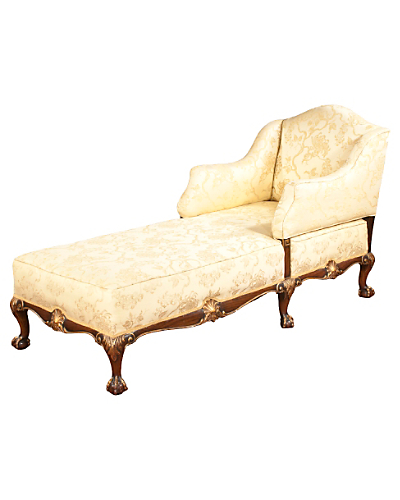 |
| Daybed |
Architecture
Architecture of this time was modeled after the mother country. One of the more popular architecture styles is the American Victorian style. This included various forms of the style, but overall it was focused on elaborate, romantic and emotional designs. The homes were very large with many smaller rooms inside and each of those rooms had a particular function. The interiors were dark with heavy drapery, dark wood and wood floors. While the exteriors on the other hand, were often painted bright colors. This period was all about advertising the amount of wealth that the owners had.
 |
| American Victorian home |
 |
| And another, notice the brightly painted exterior |
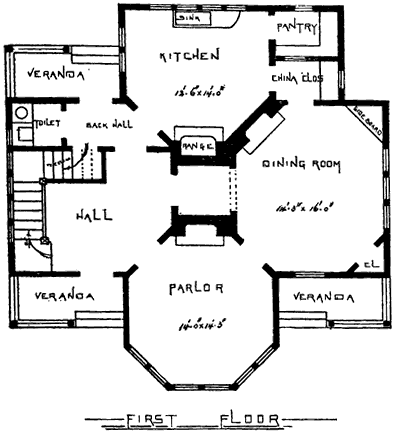 |
| A floor plan for an American Victorian home |
+Parlor+on+Brooklyn+Heights+of+Mr+and+Mrs+John+Ballard.jpg) |
| An idea of what an American Victorian may have looked like on the interior, during the later periods |
 |
| Another idea of an interior |
Extra Credit: This video is about restoring an American Victorian home back to it's previous grandeur.
Current Day Applications:
 |
| Example of a current day Victorian style reproduction home |
 |
| Federal style interior |
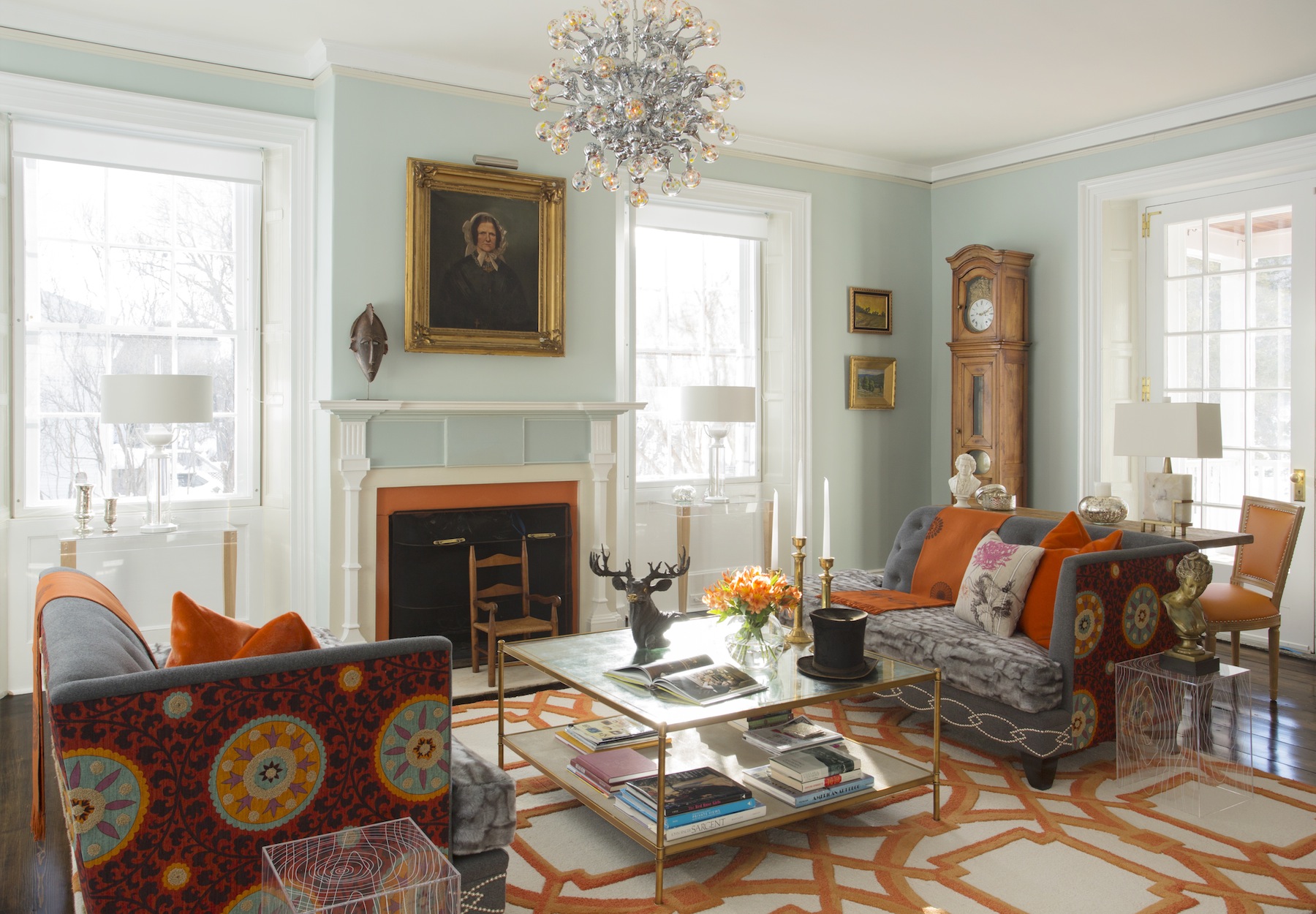 |
| . |
Sunday, April 19, 2015
English Renaissance: Peer Reviews
Shannon: I really liked how Shannon focused on the furniture of this time period. I feel like I often forget to really look at the furniture, because I always more concerned with the architecture. I really liked the DIY gate leg table, I would like to have something like that in my home.
Emma Ramey: I really enjoyed that she gave detail about multiple periods within the English renaissance, also her images were nice. I especially liked modern settle chair picture, again that is something that I would actually like to have.
Emma Ramey: I really enjoyed that she gave detail about multiple periods within the English renaissance, also her images were nice. I especially liked modern settle chair picture, again that is something that I would actually like to have.
Saturday, April 18, 2015
English Renaissance
The English Renaissance was a period of time from approximately 1550-1830. This was a period which was marked by time periods named after the rulers of the time. For example the Elizabethan period is known as such because Queen Elizabeth I was the ruler of that time. Each of these periods were heavily influenced by the rulers, and design styles tended to follow their personal preferences.
English architecture was the last piece of the renaissance era to change, because of this areas physical location. It is isolated from the continent and therefor the renaissance styles of other areas did not have as much of an immediate effect. The climate and available materials had the biggest influence on architectural stylings of this period.
Extra Credit: This website gives a great overall description, more in-depth, of the overall time period.
http://www.uh.edu/~djudkins/life_in_renaissance_england.htm
Since there is so much that took place in this time period, I chose to just breifly highlight two of the smaller periods within it.
Tudor Style
Established by Henry VII, Edward VI, and Mary. There were some issues between the king and the church, so money was not used to build more churches, instead more homes were built and land was given to wealthy merchants and traders. Tudor style is commonly associated with timber framed construction, and this style officially marks the start of the Renaissance. Visible signs of comfort and luxury were included in this style.
Extra Credit: This video shows some great examples of Tudor style homes, most of which are recent applications but they give a great idea of what this style would look like.
https://www.youtube.com/watch?v=bwHrIrrTtS0
Elizabethan Period
This period took place during the reign of Elizabeth I and James I. It was a period of great wealth and many manors and country homes were built. One of the most well known designers of this time was Inigo Jones, he is known as the man that introduced Renaissance architecture to England. Much of his work relies on Italian architect, Palladio. Among his most famous works are the queens home and the tulip staircase.
Current Day Applications:
Extra Credit: This is a two part documentary by the BBC about the English Renaissance.
English architecture was the last piece of the renaissance era to change, because of this areas physical location. It is isolated from the continent and therefor the renaissance styles of other areas did not have as much of an immediate effect. The climate and available materials had the biggest influence on architectural stylings of this period.
Extra Credit: This website gives a great overall description, more in-depth, of the overall time period.
http://www.uh.edu/~djudkins/life_in_renaissance_england.htm
Since there is so much that took place in this time period, I chose to just breifly highlight two of the smaller periods within it.
Tudor Style
Established by Henry VII, Edward VI, and Mary. There were some issues between the king and the church, so money was not used to build more churches, instead more homes were built and land was given to wealthy merchants and traders. Tudor style is commonly associated with timber framed construction, and this style officially marks the start of the Renaissance. Visible signs of comfort and luxury were included in this style.
Extra Credit: This video shows some great examples of Tudor style homes, most of which are recent applications but they give a great idea of what this style would look like.
https://www.youtube.com/watch?v=bwHrIrrTtS0
 |
| Half-timbering, Gothic Revival tracery and Jacobean carved porch brackets combine in the Tudor Revival Beaney Institute, Canterbury (1899) |
Elizabethan Period
This period took place during the reign of Elizabeth I and James I. It was a period of great wealth and many manors and country homes were built. One of the most well known designers of this time was Inigo Jones, he is known as the man that introduced Renaissance architecture to England. Much of his work relies on Italian architect, Palladio. Among his most famous works are the queens home and the tulip staircase.
 |
| The queen's house |
An interesting fact about this period is that many architectural plans are in the shape of E, C, or H. These also included gateways, long drives and formal gardens and parks on the grounds.
 |
| Floor Plan of the Hatfield House |
Current Day Applications:
 |
| Modern Tudor Home |
 |
| Modern Tudor inspired interior |
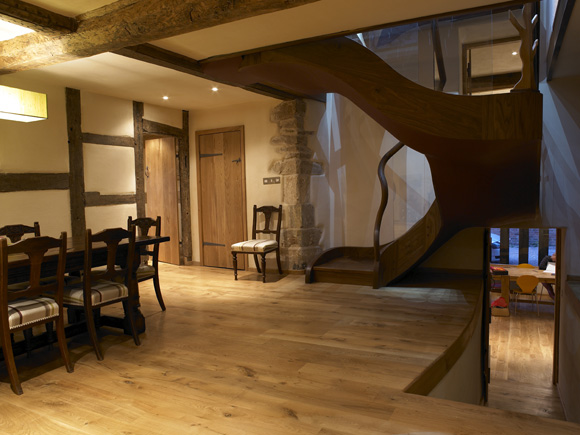 |
| Modern Elizabethan inspired interior with a very interesting staircase |
 |
| Modern spiral staircase, like that of the tulip staircase by Jones. |
Extra Credit: This is a two part documentary by the BBC about the English Renaissance.
Sunday, April 12, 2015
French Renaissance: Peer Reviews
Haley Hofman: She started out with good information, but I think that at times some of what she said was contradictory to what we actually learned in class. Also, since I am a future teacher, I tend to notice grammar issues very easily, and I found a few in her post, I would suggest to her that she should reread her posts before submitting them. I would have liked to see some pictures that had to do specifically with the neoclassical period, since that is the one that she chose to cover more in depth. However, I felt that she had a pretty good base knowledge of this time period and that she chose a nice example of a modern day French Renaissance inspired bedroom.
Micah: I like the style of Micah's blog, it was easy to read and visually appealing. Micah seemed to have good base knowledge of this period as well, however I would have liked to see a little bit more. It felt quite short. The images were good though, especially the current example of a mansard roof.
Micah: I like the style of Micah's blog, it was easy to read and visually appealing. Micah seemed to have good base knowledge of this period as well, however I would have liked to see a little bit more. It felt quite short. The images were good though, especially the current example of a mansard roof.
Saturday, April 11, 2015
The French Renaissance
The French Renaissance lasted from approximately 1453 to 1879.
"Francois I strengthened the French Crown during the early 16th century. He also welcomed to France many Italian artists, such as Leonardo da Vinci. Their influence assured the success of the Renaissance style. The years between 1562 and 1598 saw an increase in the number of the Huguenots (Protestants), which led to the Wars of Religion between Catholics and Protestants. Catherine de Medici ordered the St. Bartholomew's Day Massacre of hundreds of Protestants. In 1589, Henri IV, who was a target of the massacre, became the first Bourbon king of France and wisely converted to Catholism. Henry ended the Wars of Religion with the Edict of Nantes, which guaranteed religious and political rights to the Huguenots.
1464: King of France establishes postal system
1494-1559: Italian Wars- France and Austria fight over Italian territories
1515: François I crowned King
1519: Leonardo da Vinci dies in the arms of François I
1547-59: Reign of Henry II
1562-98: The Wars of Religion
1572: Massacre of Protestants on St. Bartholomew's Eve in Paris
1589-1593: Henri IV becomes 1st Bourbon King and converts to Catholicism, ending Wars of Religion"
-found on http://aam.govst.edu/projects/tanstett/French%20timeline.htm
The French periods were divided into 10 subdivisions, so there is a massive amount of information that could be covered when talking about the French Renaissance, however I am going to mainly focus on the Rococo period.
Rococo history
The Rococo period was led by Louis XV, and it turned out to be a bit of a disaster. His reign included; wars, colonial struggles with England, Versailles was heavily criticized and he was well known for his mistresses, who had a big impact on the styling of the time.
This period was known for it's focus on pleasure and for the design stylings that were determined by King Louis XV's mistress, Madame de Pompadour. This period also included a rise of the common folk and an age of reason. Criticism of the crown was a much more open practice, than it had been in the past.
Rococo Architecture and Interiors
Architecture focuses changed during this period, city mansions and townhouses became much more popular as the chateauxs and palaces of the past went by the wayside. Exteriors and gardens were less important, as comfortable and private living were the main focus. The style had a very feminine touch to it, because of Louis XV's mistresses influence. One area of main importance in Rococo style was the "salon" or sitting room. The salons were the center of Parisian style.
 |
| Rococo Salon |
 |
| Rococo Salon |
Rococo interiors were smaller and better heated, with lower ceilings. The style of curves were often included in these interiors, room corners were rounded. Rooms were dainty and had a very close personal feeling about them. Symmetrical arrangements with scallops and cockleshells are main signs of a Rococo style interior.
| Rococo style mirror |
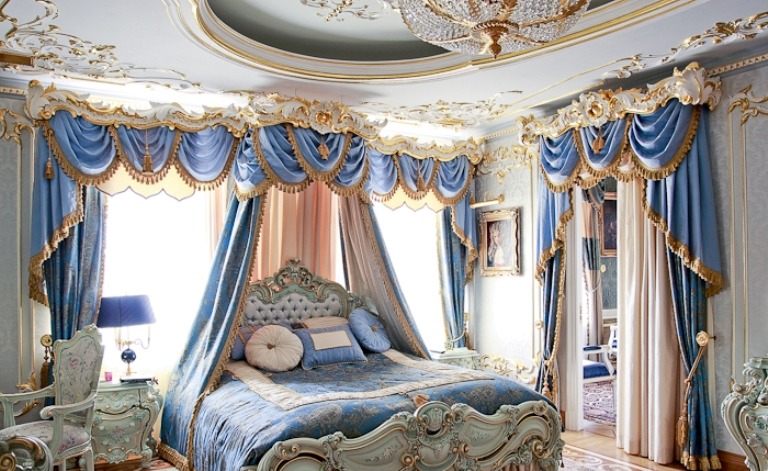 |
| Rococo bedroom |
Rococo Furniture
Rococo furniture was 3-D in appearance, scaled to fit the size and contour of the human body, and chairs are well known to have a cabriole leg.
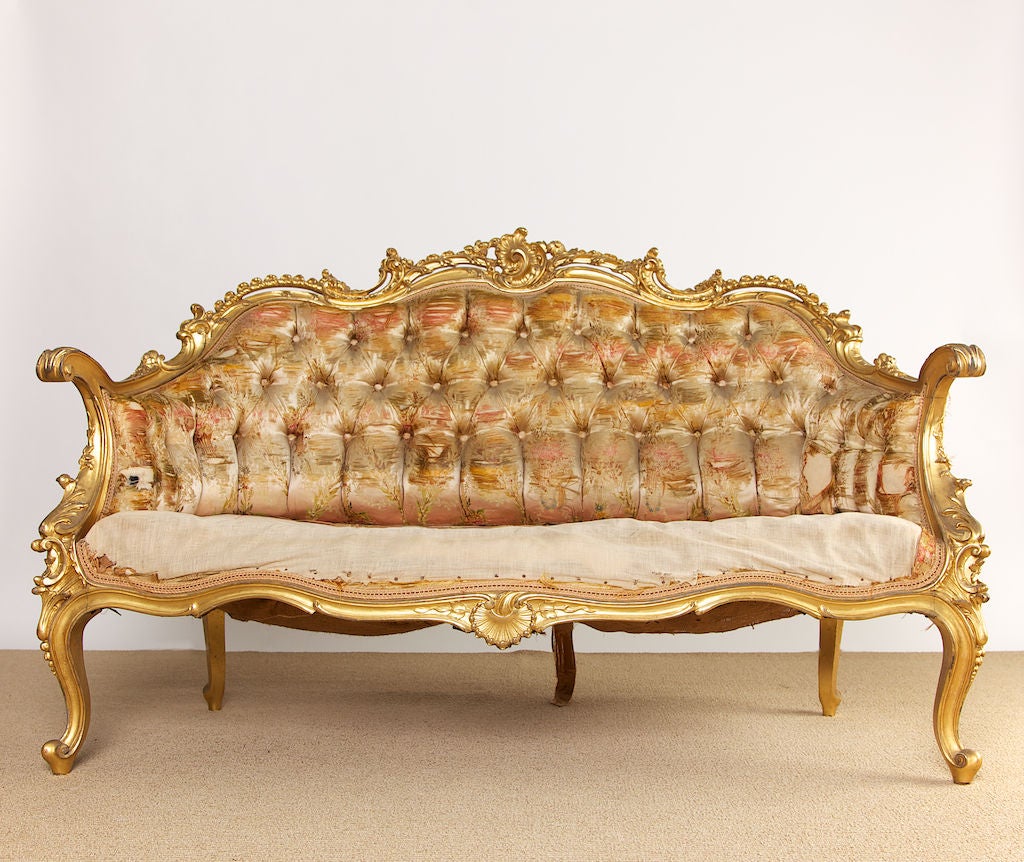 |
| 19th century French Rococo style Louis XV settee |
 |
| Rococo chair with cabriole leg |
Current Day Applications
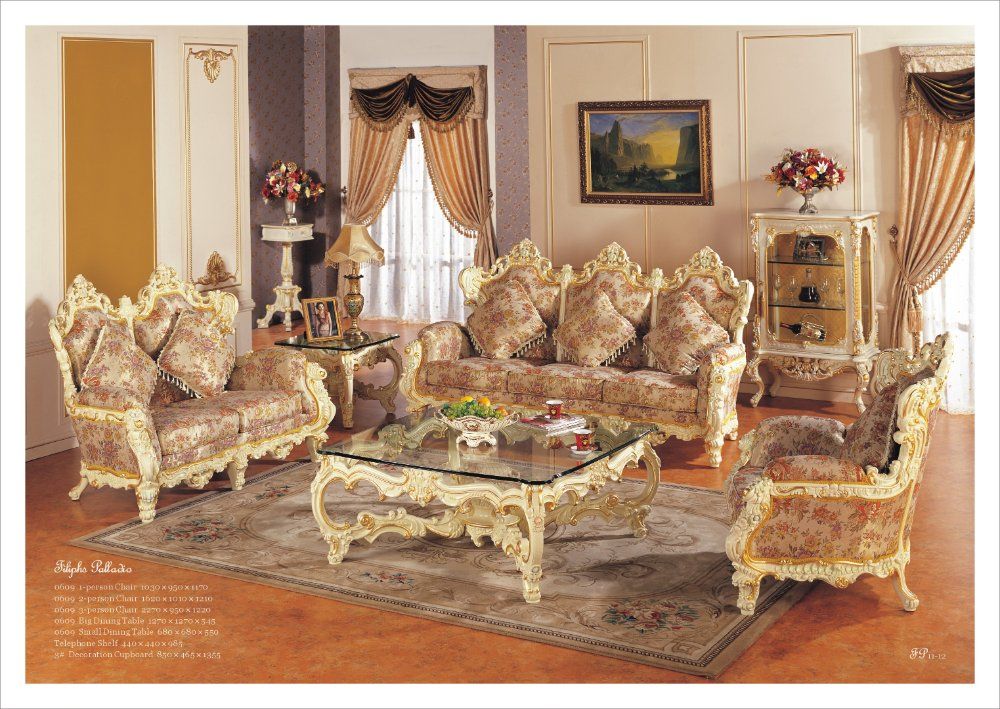 |
| Hot Selling,Rococo Style Living Room Sofa Set, Palace Royal Furniture European Style Furniture Online with $13853.41on Fpfurniturecn's Store | DHgate.com |
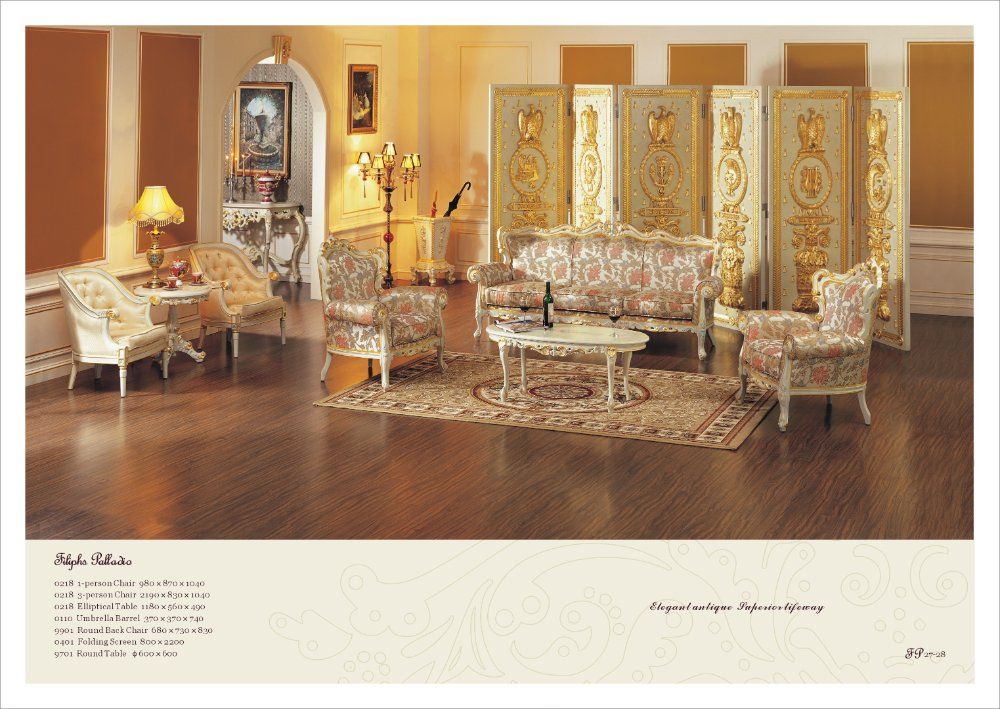 |
| the president suit classic furniture sofa set -antique living room furniture |
 |
| Rococo style bedroom |
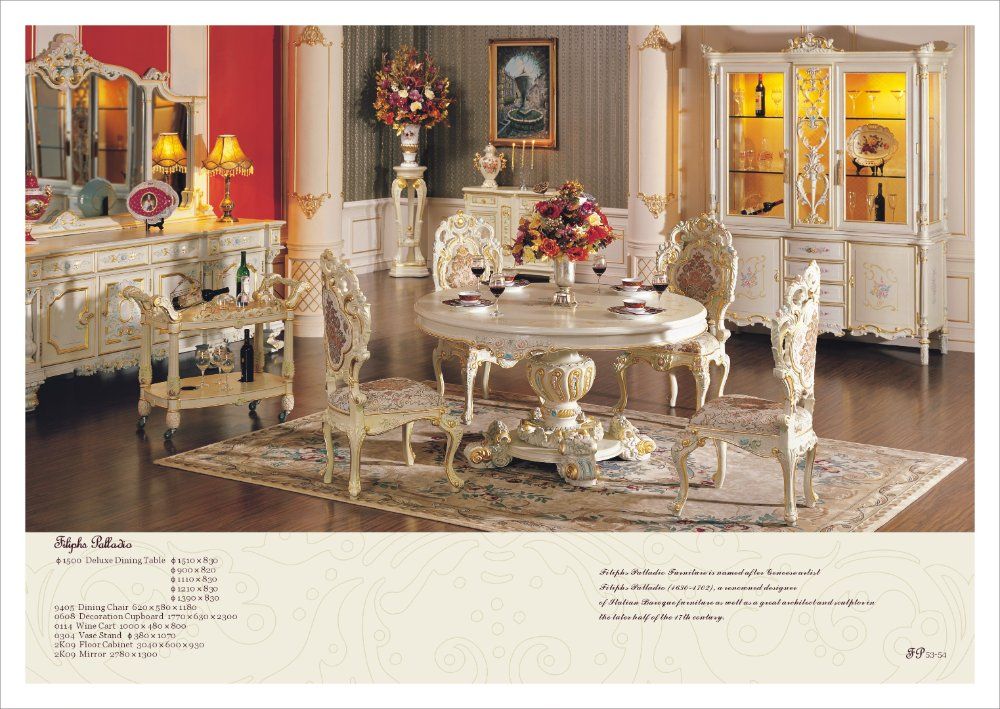 |
| Rococo dining set |
Subscribe to:
Posts (Atom)